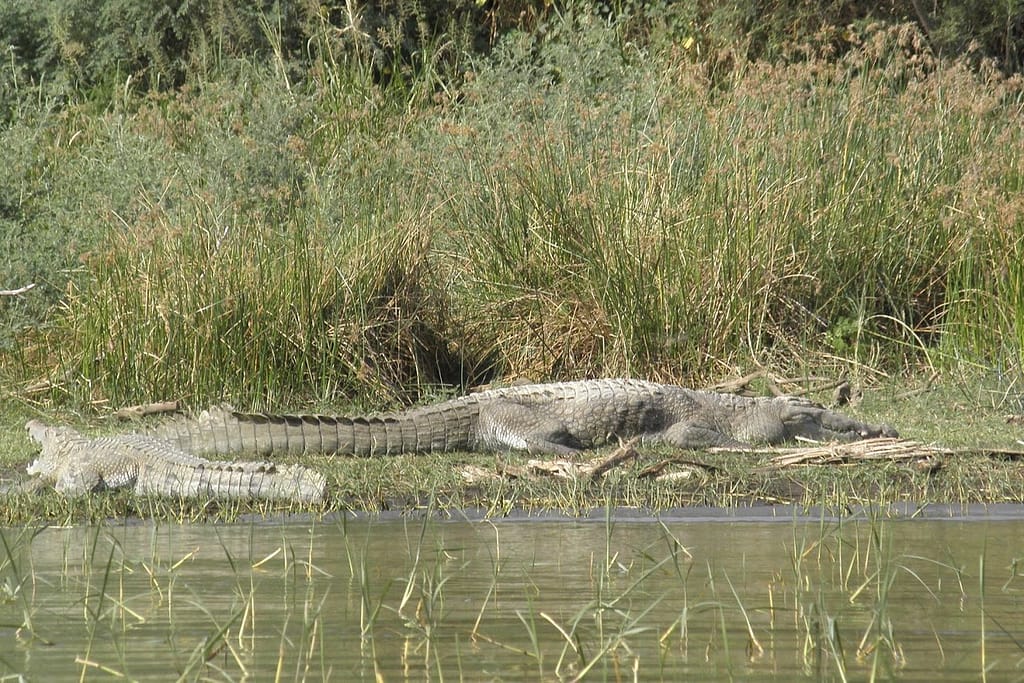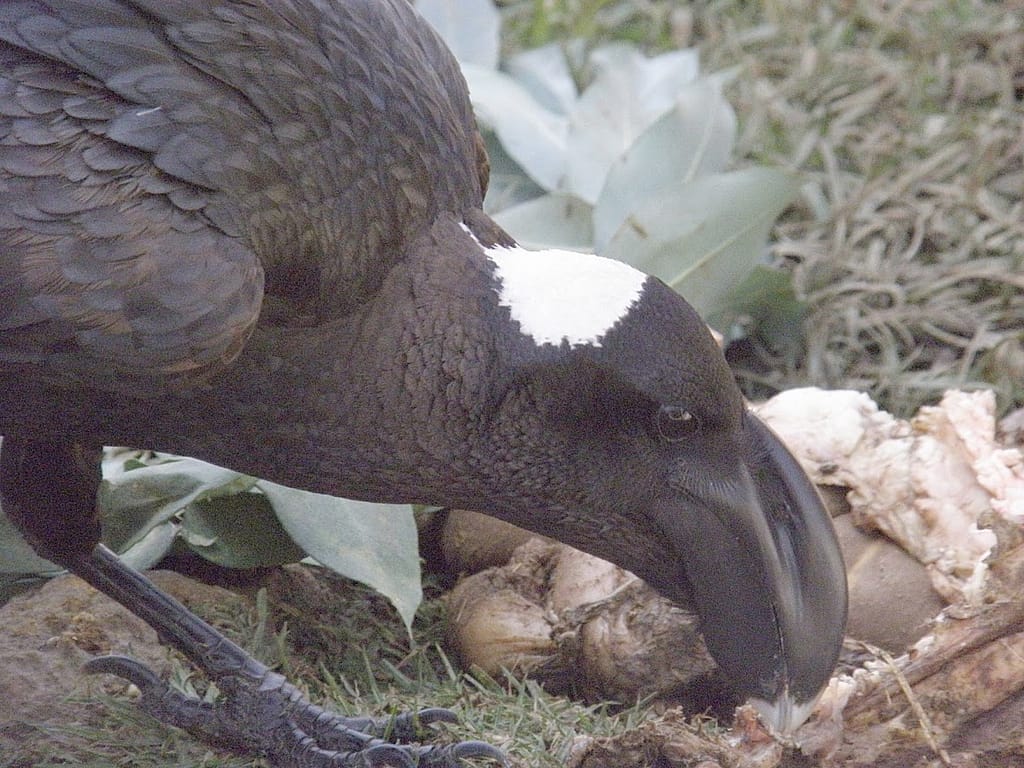The geographical diversity of Ethiopia, with its high plateaus, rivers in deep valleys, dense forests, and lakes, explains the variety of its ecosystems and wildlife.
Perhaps the cutest of Djibouti's endemic animals! Gundis are small animals that spend most of their time sleeping and only come out of sleep to look for food. They are herbivores who have the particularity of not drinking.
All the pictures published in this article were taken by Francis Terrassier ; the following links allow to access his superb photo albums of Ethiopian birds
During your trip to Ethiopia, discover the reserves and national parks spread throughout the country
Ethiopia's geographical characteristics are a determining factor in the isolation of its flora and fauna over millions of years, a phenomenon that has favoured the emergence of endemic species.
For more detailed information on these reserves and the animals found there, please refer to the table at the end of this article, which only mentions some of the 21 national parks and a dozen sanctuaries or protected areas in Ethiopia.
-At respectively 700 and 800 kms south east of Addis Ababa, Omo National Park and that of Mago There are large mammals such as buffalos, elands, giraffes, zebras... and 300 species of birds. Cheetahs, lions and leopards, although present as on other sites in Ethiopia, can only exceptionally be seen.
-Gambella National Park located 200 kms north of the first mentioned, is frequented by numerous antelopes and gazelles, and also by elephants and hippos.
-Moving closer to Addis (400 kms to the south-west), we find Kafa Biosphere ReserveThe area is home to 300 species of birds such as eagles, cranes and other inseparable and sentinel birds of Abyssinia, and as many species of mammals, such as buffaloes, cobas, hippos, primates and rats...the list is not exhaustive.
-NECHISAR National Park on the great rift, 470 kms south of Addis, with lakes Abaya and Chamo, is a paradise for 320 species of birds, including the fish eagle, the Abyssinian bushbuck and the kori bustard. You will not miss the numerous crocodiles (the largest in Africa) and hippos that frequent the banks of Lake Chamo.


- On the same axis as the Nechisar, south of the Lake Ziway where white pelicans, ibises and marabouts abound, one finds the sanctuary of SENKELLE created to protect the endemic Swayne's hartebeest, of which only a few hundred individuals remain.
-Only 220 kms south-east of the capital, 460 species of birds inhabit the Awash National ParkYou will also find common mammals such as the Sömmering gazelle, the greater and lesser kudu, and others that are very difficult to observe such as the caracal, cheetahs, leopards and other animals. You will also find common mammals such as the Sömmering gazelle, the greater and lesser kudu and others that are very difficult to observe such as the caracal, and other cheetahs, leopards and lions.
- The mountainous areas also have their animal treasures. You will have a good chance to see the endemic Abyssinian wolf in the high altitudes of the national park of the BALE Mountains (400kms south-east of Addis), where nyalas, guerezas and other spicy pigs and giant mole rats live.
- More than 800 kms north of Addis, in the national park of the SIMIEN MountsIn the SIMIEN, where several peaks reach more than 4000 m of altitude, you will see, as in BALE, the emblematic Abyssinian wolf and the astonishing raven. The SIMIEN is home to 16 endemic bird species. The massif is also known for the gelada (lion monkeys) which live in bands of up to 800 individuals. SIMIEN is the only place where you may have the chance to see the endemic Abyssinian Ibex.
In Ethiopia the endemic species are numerous
The species retained for a few lines of comments in this article are those for which I have photos taken in their environment.
Some endemic birds of Ethiopia
-the crow crow endemic to Ethiopia can also be found in neighbouring Eritrea. It is the largest of the crows (69 cm). It frequents the mountain ravines from 1200 meters of altitude but it can also be found in the big gardens of the cities. It is not shy. Causes damage to crops. Feeds on carrion, small rodents and human food remains.
-wattled ibis 65 to 75 cm long, it prefers grasslands and highland riverbeds from 1500 m. It can also be found in urban parks. It feeds on worms, larvae and sometimes frogs, mice...you can find it around lakes (Awasa) as well as in the BALE or on the lawns of Addis Ababa.

-blue-winged goose measures between 60 and 75 cm and frequents humid plateaus at altitude. Some comments say it is shy, others that it is easily approached. It grazes on grass but does not disdain insects, worms and small bugs.

-Redstart's rail It is a 30-cm long bird that feeds on aquatic insects, crustaceans, small snails and earthworms found in the grasses or mud of the highland marsh areas where it lives. The species, like others, is threatened by the intensive use of grassy areas by livestock, and the conversion of these areas to grain fields.

-the black-headed serin 9 to 25 cm long, is abundant in the highlands of Ethiopia where it feeds on plant seeds such as the amazing giant lobelia.

Some endemic mammals of Ethiopia
-the geladaThis 90 % herbivore lives on high plateaus not far from cliffs where it takes refuge at night and in case of danger. The males are easily distinguished from the females; they are much larger and heavier (20 kg on average against 13 kg for the females) and have a thick mane which has earned them the name of lion monkey. In addition, the torso of males is marked with a red triangle-shaped area. Geladas move around by "sliding" on their buttocks, which have calluses that act as cushions. Their social system is very developed.

-the Abyssinian wolf is the 3th the rarest canid in the world. Classified as an endangered species, it lives in the highlands at over 3000 m. Its weight is 14 to 19 kg for males and 11 to 14 kg for females. These wolves gather at night in packs of about forty individuals but hunt alone during the day.

-the mountain nyala is a herbivorous bovid living in the highlands between 700 and 4200 m of altitude in herds of about ten individuals. Its weight varies from 150 to 300 kg, its height from 190 to 260 cm and its top speed is 50 km/h. It is relatively safe from its main predator, the leopard, which only moves very little in its environment. The mountain nyala is an endangered species due to habitat destruction and competition with domestic livestock.

Table of location of some animal species in Ethiopia
| LOCATION | BIRDS | MAMMIFERES |
| OMO National Park >660 kms southwest of Addis - Access problematic >300 species of birds MAGO National Park >800 kms southwest Addis | Boran Cisticola- Red-naped Gonolek- Irrisor Damara- Donaldson's Mahalis- Blue-breasted Kingfisher- Ashy Blackbird | Same species in the 2 parks-Russian hartebeest-Buffle- Brazza's cercopithecus-colobe-elan-elephant-giraffe-cheetah-leopard-lion-Burchell's zebras |
| GAMBELA National Park >600 km southwest of Addis - South Sudan border area access problematic | Ostrich- | Antelopes-Roan antelope-Red hartebeest-Buffalo-cob-elephant-Mongala-giraffe-hippopotamus-leopard-lion-topis-tiang |
| KAFA Biosphere Reserve >400 Kms southwest Addis 300 mammal species >300 species of birds | Crowned eagle - wattled crane - Abyssinian lovebird - monk oriole - yellow-faced parrot - redstart - Abyssinian sentinel - olive sunbird | African buffalo - duiker- African wild cat-cobe-daman-hippopotamus-spotted hyena-primates-lion-leopard-ratel-serval - |
| GIBE SHELEKO National Park >180 Kms west of Addis | >200 species including aurora beaumarquet and half-red monticole | Greater kudu and some hippos |
| NECHISAR National Park 320 bird species ABAYA and CHAMO lakes >470 Kms south Addis | Fish eagle - Abyssinian bushbuck - Nechisar whippoorwill - kori bustard | Swayne's baboon-Swayne's hartebeest-Guereza's colobus-Günther's dik dik-Grant's gazelle-Large kudu-hippopotamus-lion-Burchell's zebra |
| Lake ZIWAY Sanctuary of SENKELLE 191 bird species Lakes SHALA and ABIATA >350 Kms south Addis | African fish eagles-marabou-sacred ibis-African grayling-white pelican-Screaming eagle-fork-tailed duck Calaos, Abyssinian rollers Ostriches at Shala Abiata | Swayne's hartebeest-Reedbuck-Ourabies-Spotted Hyenas-Gazelles at Shala and Abiata |
| BORANA National Park Sanctuary of YABELO >570 Kms south Addis | Abyssinian Bucorva - Streseman's Corbin - White-tailed Swallow | Swayne's bubalus-Waller's dace |
| SIMIEN Mountains National Park >830 Kms north Addis | Raven corbivau- American Goldfinch-Bearded vulture-Wattled owl-Abyssinian lapwing | Hamadryas baboon- Abyssinian ibex- black and white colobus- rock dwarf- gelada-mountain gorilla- Menelik's harnessed guib-leopard -Abyssinian wolf-orotrague |
| AWASH National Park >220 km southeast of Addis >460 bird species | African fish eagle-bearded ostrich and hoopoe-African hawk-francolin-bearded vulture-Sagittarian messenger-Kori-Outarde yellow-throated serin -dark traquet | Caracal-jackal with scabbard-wildcat-Sömmering's gazelles- Greater and lesser kudu-cheetah-leopard-lion- oryx beïsa-phacochère-prototype-serval |
| BALE Mountains National Park >400 km southeast of Addis -highest concentration of large mammals 280 bird species | Black-headed Goldfinch- crow crow-Galinier's paraphrase-Rouget's skullsentinel of Abyssinia-Abyssinian Cane | Spotted duiker-white duikerleopard- lion-Abyssinian wolflycaon-nyala-giant spicy pig-rat-giant mole |
Neither rare nor endemic, for the pleasure of the eyes
Finally, to know more about the must-see sites to discover during your trip in Ethiopia, it is by here !




8 responses
Why does your article call animals endemic that are found in other countries?
Thank you, Annick, for your pertinent question, which would undoubtedly require the developments of specialists, of which I am not one. However, it is undoubtedly possible to say that animal or plant species are not affected by administrative boundaries, which are changing and can cut across the same ecosystem. Animals or plants can therefore be found in areas bordering neighbouring countries, without this taking away their specificity as endemic species. Moreover, some comments speak for certain animals of endemic species of Ethiopia and Eritrea. This may explain why, depending on the source, the number of endemic species of a country is not the same.
I have known Alain for over forty years. A great guy who I am sure will take you to the end of your dreams.
Francis Terrassier.
Thank you Francis.... You set the bar high for me...
Excellent article....very well documented.
Thank you Gilles, I hope this little glimpse of the animals that can be seen in Ethiopia will decide you to come !
Hello
Deuxième blog que je visite, pour un thème « contes et cafés »
Je vais réviser mes certitudes sur l’Ethiopie.
Je ne voyage plus mais j’en ai trouvé le désir.
Merci.
Je vous partage sur mon fb
Bonjour Lania
Merci pour votre partage
et écoutez vos désirs de voyages !
Pourquoi pas l’Éthiopie ou
Djibouti ? Vous ne serez pas déçue,
A bientôt, qui sait…